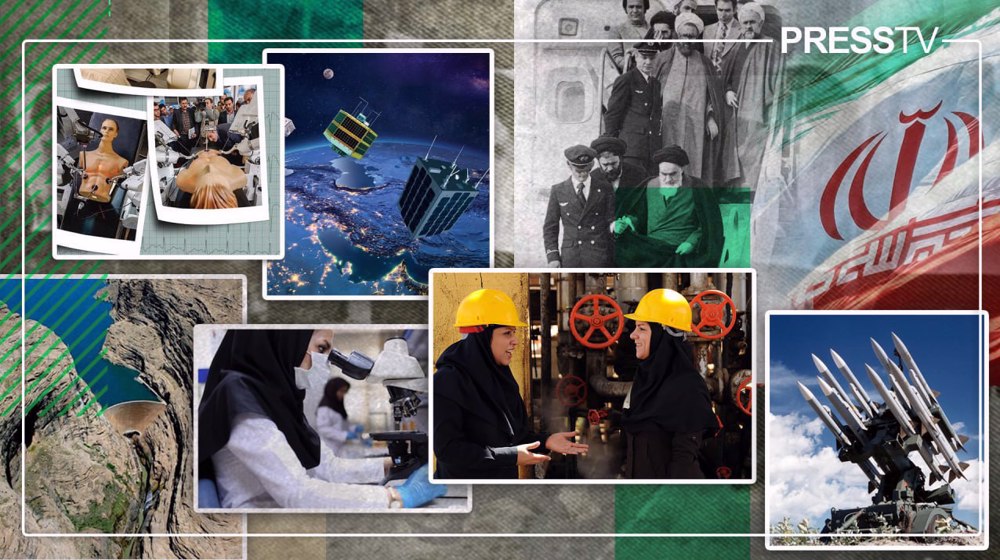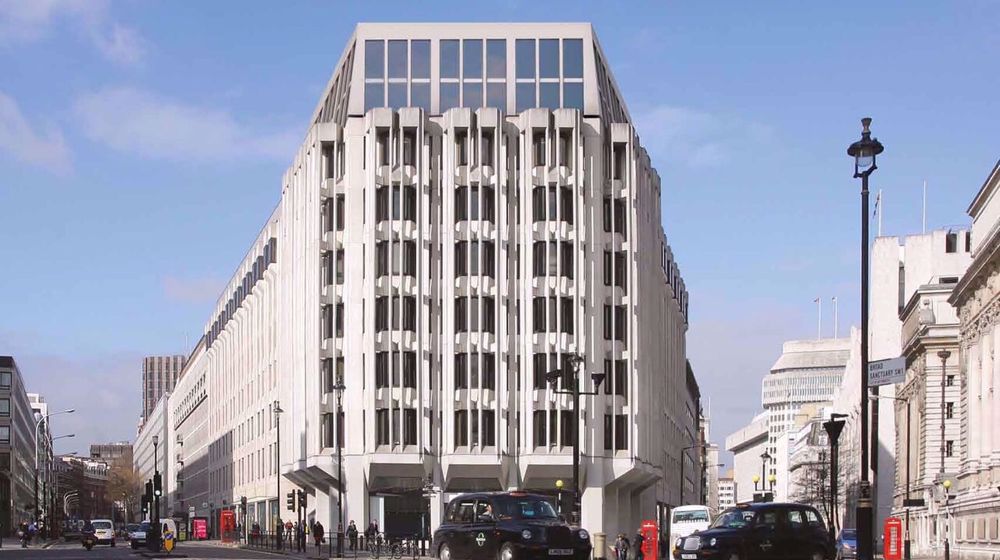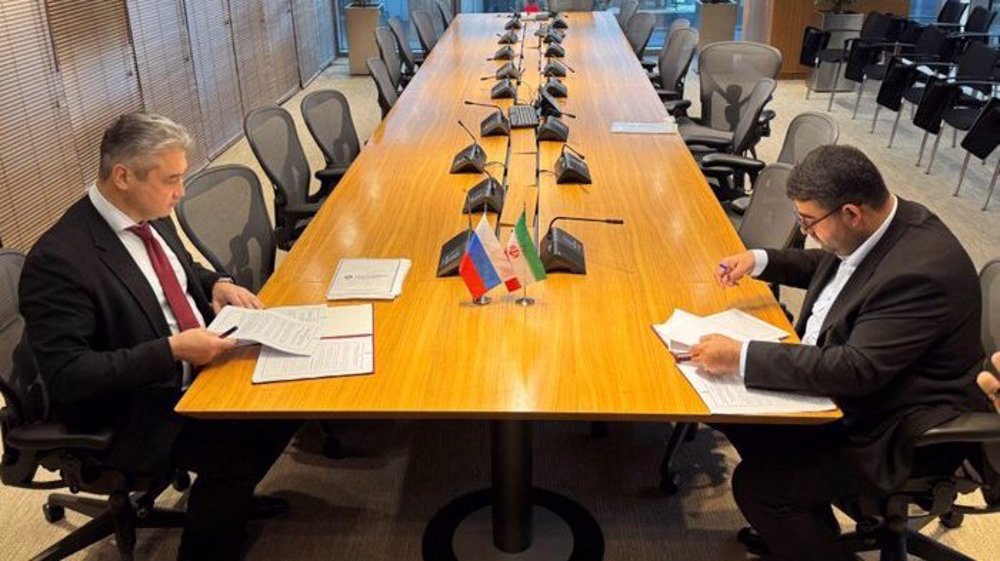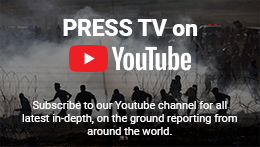Debunking misconceptions: Islamic Republic of Iran's reality vs Western portrayals
By Nahid Poureisa
In much of the mainstream Western media, Iran is often portrayed as a backward country, a place where the Islamic Revolution of 1979 brought about oppression, particularly towards women, and trapped the nation in a grip of authoritarianism.
The image painted is that of a nation in decay, with its women silenced and its people suffering under an "oppressive regime."
However, this depiction does not reflect the reality on the ground, where the country has since the 1979 Islamic Revolution made significant strides in various spheres despite external pressures in different forms.
Today marks the 46th anniversary of the Islamic Revolution, a historic moment when the Iranian people overthrew the West-backed Pahlavi regime—a corrupt, oppressive monarchy that served only its own interests and those of a small, privileged elite.
The revolution was not just a resistance to foreign influence but a movement to liberate the Iranian people from decades of exploitation and neglect. For too long, the Pahlavi regime, a puppet of Western powers, reigned over a nation in turmoil, pushing policies that deepened inequality and stifled progress.
The narrative in the West, which portrays the Islamic Revolution as a step backward for the country, fails to take into account the brutality and injustice of the regime that was overthrown in a popular movement.
Iranians mark 46th anniversary of Islamic Revolution with nationwide marches, celebrations#IR46https://t.co/nyUf0Drb7M
— Press TV 🔻 (@PressTV) February 10, 2025
Tyrannical and elitist Pahlavi rule
The Pahlavi rule was a tragedy for the Iranian people, a period marked by repression, poverty, and widespread inequality.
Under this regime, development was not about uplifting the masses but about enriching a handful of urban elites, who enjoyed a life of luxury while most Iranians suffered.
This system of elitism was a betrayal of the Iranian people, leaving rural areas and ordinary Iranians neglected and women marginalized.
Under the Shah regime, only 43 percent of rural areas had electricity by 1978, a shocking example of its failure to invest in the needs of the vast majority.
Rural women were left illiterate, with a staggering 94 percent unable to read or write. Healthcare was a privilege of the rich, while rural areas—home to most of the population—had no access to basic medical services.
Maternal mortality rates were atrocious, exceeding 200 deaths per 100,000 live births in 1978, a clear sign of the regime’s indifference to the lives of ordinary Iranians.
Education under the Shah regime was another tool of oppression. Higher education was reserved for the urban elite, leaving rural children—especially girls—without opportunities to improve their lives.
Women were excluded from higher education and professional careers, settling as second-class citizens in a society that had long since abandoned any pretense of equality.
The 1979 Islamic Revolution was the beginning of a multi-stage process to restore the golden age of Islamic civilization. 46 years on, Revolution remains a living and evolving force, its struggle for justice continuing as long as injustice persists.#IR46 pic.twitter.com/2G16OLYui0
— Press TV 🔻 (@PressTV) February 9, 2025
Empowerment of women by Islamic Revolution
The Islamic Revolution in 1979 led by Imam Khomeini marked a turning point, a break from the Shah’s oppressive policies, and a massive leap toward justice and equality.
The popular revolution shifted the focus to the Iranian people as a whole, particularly the women who had been subjugated for so long under the Shah’s rule.
Before the revolution, rural women’s literacy was a dismal 6 percent. By 2016, that number soared to 83 percent, thanks to massive investments in education, teacher training programs, and schools built in rural areas.
Today, over 60 percent of university students in Iran are women, excelling in different fields, including medicine, engineering, and science. In fact, Iranian women have made remarkable strides in STEM fields, with Iran leading the region in women’s representation in science and technology.
Women’s health also saw dramatic improvements after the Islamic Revolution. Maternal mortality, which had been a devastating consequence of the Shah regime's neglect, dropped from over 200 deaths per 100,000 live births in 1978 to just 16 by 2020.
Life expectancy for women increased from 54 years in 1978 to 78 years in 2020—a testament to the success of expanded healthcare initiatives that the Shah regime had deliberately ignored.
Explainer: Iran's advancements after Shah's downfall#IR46 pic.twitter.com/21JmrLxqwP
— Press TV 🔻 (@PressTV) February 9, 2025
Rural development: Overcoming the legacy of neglect
While the Shah regime’s policies deliberately ignored the needs of rural Iran, the Islamic Republic of Iran after 1979 prioritized the development of these neglected areas.
By 2020, over 99 percent of rural homes were electrified, and clean water projects reached even the most remote villages. More than 200,000 kilometers of roads were constructed, connecting rural areas to cities, improving access to markets, education, and healthcare.
Under the Shah regime, rural Iran was left to wither, but the revolution provided essential infrastructure and services, proving that development can and should be for everyone, not just the rich and powerful.
Over 17,000 rural health houses were built, providing primary healthcare to communities that had been abandoned by the Pahlavi regime for decades.
Explainer: Why Iranians favored Imam Khomeini and the Islamic democratic rule instead of the US-backed Pahlavi monarchy#IR46 pic.twitter.com/WennGcDWQ3
— Press TV 🔻 (@PressTV) February 4, 2025
Environmental sustainability: A vision for the future
Iran has made remarkable strides in environmental sustainability since 1979, driven by the 15 environmental directives issued by Leader of the Islamic Revolution Ayatollah Seyyed Ali Khamenei, to promote ecological care and a green future.
These directives provide the framework for a comprehensive approach to addressing environmental challenges, including desertification, pollution, and climate change.
Some of the key elements of these directives are:
Sustainable Development: Incorporating environmental care into national development plans, ensuring a balance between economic growth and ecological preservation.
Forest Conservation: Preventing the destruction of forests and promoting reforestation initiatives, including programs like the "One Billion Tree Planting Initiative."
Energy Efficiency: Promoting the use of renewable energy sources, such as solar and wind, to reduce dependence on fossil fuels and cut emissions.
Biodiversity Protection: Efforts to protect endangered species and natural habitats, ensuring the survival of Iran’s unique flora and fauna.
Green Technology: Encouraging the development of green technologies and sustainable agricultural practices to reduce environmental harm.
Eco-Friendly Urban Development: Designing cities and infrastructure to minimize environmental impact, with an emphasis on green spaces and sustainable transportation.
Climate Change Mitigation: Developing policies to address and adapt to the impacts of climate change, especially in the context of Iran's vulnerable ecosystems.
Environmental Education: Raising public awareness about the importance of environmental conservation and sustainable practices.
Protecting Marine Ecosystems: Ensuring the preservation of Iran’s coastal and marine resources, particularly in the Persian Gulf.
One example of these directives in action is the “One Billion Tree Planting Initiative,” which aims to combat desertification, restore ecosystems, and improve quality of air.
This project focuses on reforestation in arid regions and urban greening efforts to address air pollution and climate change.
The initiative exemplifies Iran’s long-term commitment to environmental sustainability and showcases how the country’s leadership has integrated ecological care into national development.
#IR46: How Iran industrialized and modernized construction sector with domestic expertise
— Press TV 🔻 (@PressTV) February 9, 2025
By @kesic_ivan#IR46https://t.co/li4Q4Hu7eE
Confronting economic challenges
Despite all these achievements since the 1979 Islamic Revolution, Iran also faces significant challenges, especially in the economic sector.
US-led sanctions have inflicted over $200 billion in economic losses, and inflation, currency devaluation, and neoliberal economic policies continue to strain the population. The over-reliance on oil exports, a legacy of the Shah regime's corrupt economic system, has made the country vulnerable to global market fluctuations.
Nevertheless, Iran’s resilience remains unmatched. The country has become a leader in fields such as nanotechnology, biotechnology, and renewable energy, demonstrating its ability to innovate despite sanctions. Women have played a crucial role in these advancements, contributing to scientific and technological progress.
The 1979 Iranian Revolution was not a movement against progress, as Western pundits have often suggested. It was a revolution for progress, national sovereignty, and equity. The overthrow of the Shah’s West-backed regime marked the beginning of a new era for Iran, one focused on the empowerment of its people.
While Iran continues to face economic challenges primarily due to illegal American sanctions, the achievements of the 1979 Islamic Revolution cannot be ignored.
Women’s education and health have vastly improved, rural development has flourished, and environmental sustainability is being prioritized. Iran’s progress, driven by the hard work and resilience of its people, proves that the revolution was not only necessary but transformative.
As we commemorate the 46th anniversary of the revolution, let’s acknowledge that Iran is not the backward, oppressive nation that Western media often portrays.
It is a country that, despite enormous challenges, has moved toward progress, development, and empowerment. The legacy of the revolution endures, and its impact is clear in the progress Iran has made over the past 46 years.
Nahid Poureisa is an Iranian analyst and academic researcher focused on West Asia and China.
(The views expressed in this article do not necessarily reflect those of Press TV.)
VIDEO | Israel is collapsing from within
UN raises alarm over ongoing Israeli strikes near peacekeepers in Lebanon
Iran, Egypt urge global action to end Israel’s violations in Gaza, Lebanon
21,000 Palestinian children ‘disabled or amputated’ in Gaza: NGO
Qatar warns Gaza deal not a true ceasefire without Israeli withdrawal
Explainer: Why is America losing its young generation to mental health epidemic
Hidden strengths of Iran’s post-revolution economy
UK Supreme Court dockets Iran’s appeal over London building confiscation










 This makes it easy to access the Press TV website
This makes it easy to access the Press TV website